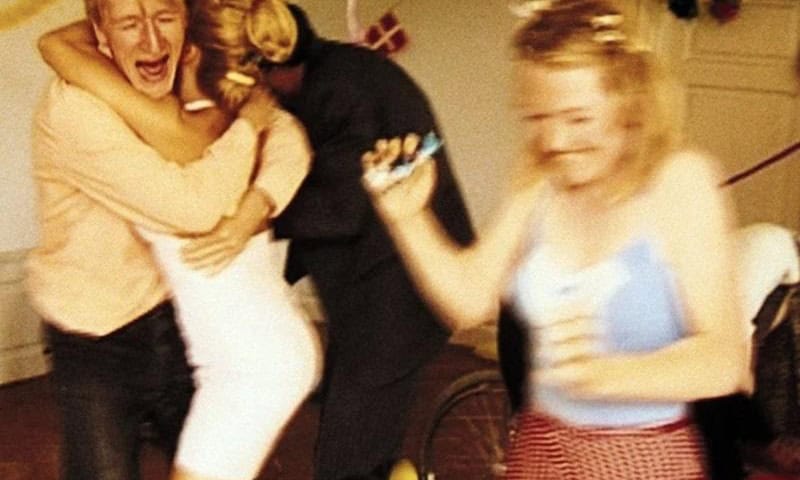What is Dogme 95, Anyway?
Of all of the cinematic manifestos, Dogme 95 is perhaps the most infamous. Here’s a look at the origin and rules of the “Vows of Chastity.”

Welcome to The Queue — your daily distraction of curated video content sourced from across the web. Today, we’re watching a video that explores Lars Von Trier’s filmmaking doctrine Dogme 95.
In 1995, Danish filmmakers Lars von Trier and Thomas Vinterberg formed Dogme 95, a film movement based on a manifesto, also known as the “Vows of Chastity.” In order for a film to fall under the auspices of Dogme 95, directors had to follow ten specific rules:
- Shooting must be done on location. Props and sets must not be brought in (if a particular prop is necessary for the story, a location must be chosen where this prop is to be found).
- The sound must never be produced apart from the images or vice versa. (Music must not be used unless it occurs where the scene is being shot.)
- The camera must be hand-held. Any movement or immobility attainable in the hand is permitted.
- The film must be in color. Special lighting is not acceptable. (If there is too little light for exposure the scene must be cut or a single lamp be attached to the camera.)
- Optical work and filters are forbidden.
- The film must not contain superficial action. (Murders, weapons, etc. must not occur.)
- Temporal and geographical alienation are forbidden. (That is to say that the film takes place here and now.)
- Genre movies are not acceptable.
- The film format must be Academy 35 mm.
- The director must not be credited.
These rules were restrictive in nature. They were an almost ascetic call for a return to unpretentious basics. The ’90s were a decade of gargantuan blockbusters and CGI big tickets that, while entertaining, ballooned budgets beyond the reach of independent filmmakers. Dogme 95 was an attempt to “purify” filmmaking and liberate filmmakers by constraining the scope of how they could make a film: everything on location; genre is unacceptable; and all cameras must be handheld.
As the video essay below explains in greater detail, there are also unlisted defining qualities of a Dogme 95 film. Not so much unspoken rules as unintended commonalities across the films produced under the Dogme 95 banner. Dogme films favor ensembles, pitch-black humor, and an uncomfortably raw chaotic energy. And, ultimately, through all its confines and constrictions, Dogme 95 breeds mess. Screaming matches, uncomfortable outbursts, destructive secrets. All the authentic human drama needed to prove that to make a compelling film, all you need is a camera and a group of people.
Watch “Dogme 95: Purity of Human Drama“:
Who made this?
This video essay was created by ScorpioDanielNerd, a.k.a. Cheng Guo (Daniel), a filmmaker based in Singapore. You can find ScorpioDanielNerd on YouTube here.
More Videos Like This
- Here’s another taste of ScorpioDanielNerd’s work: a two-part video essay on why Donnie Yen‘s fight choreography kicks ass. Literally.
- Still a bit fuzzy on Dogme 95? Here’s FilmStruck (RIP) with a breakdown of the rules.
- Here’s a recording of director Harmony Korine speaking on Dogme 95 and Julien Donkey-Boy at the Egyptian Theater in 2019.
- An excerpt from Sophie Finnes‘ short documentary Lars from 1-10, where von Trier discusses the purpose, practicality, and power of rules.
- Here’s The Cinema Cartography with how von Trier’s approach to realism deconstructs cinema itself.
- ScreenPrism has it right: von Trier wants to make us uncomfortable in order to promote honesty and provoke change.
- Here’s Thomas Vinterberg looking back on Festen, the first Dogme 95 film (“the rules of Dogme [were] a game…it was politics, it was a provocation, it was arrogance, and it was also playfulness”).
